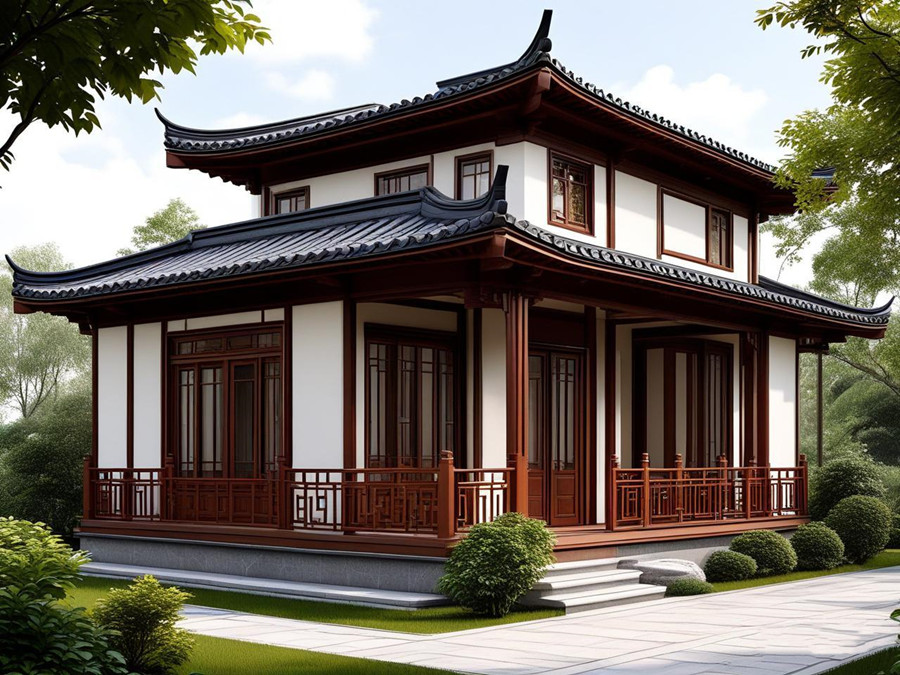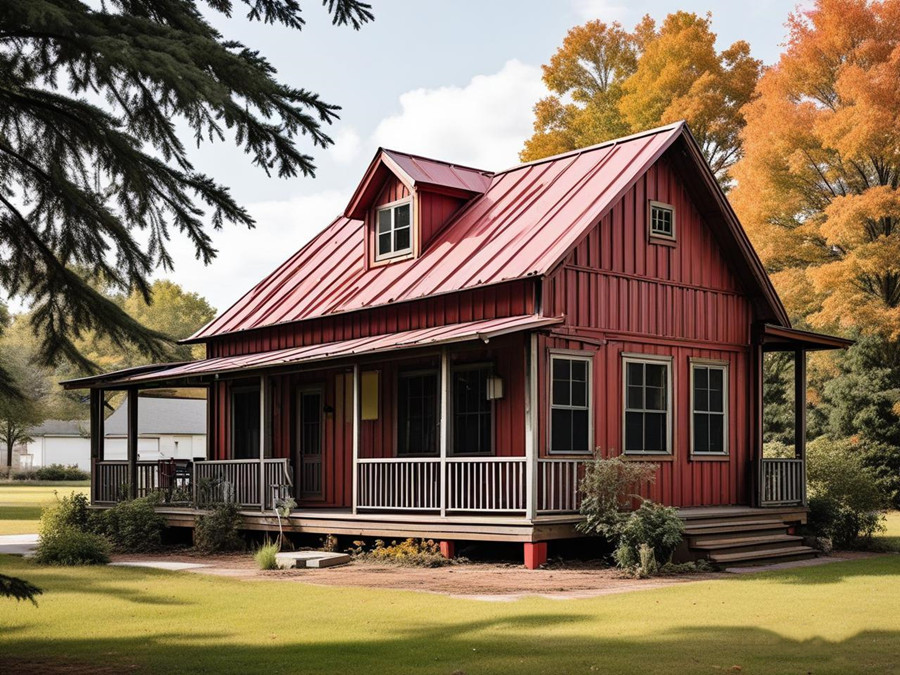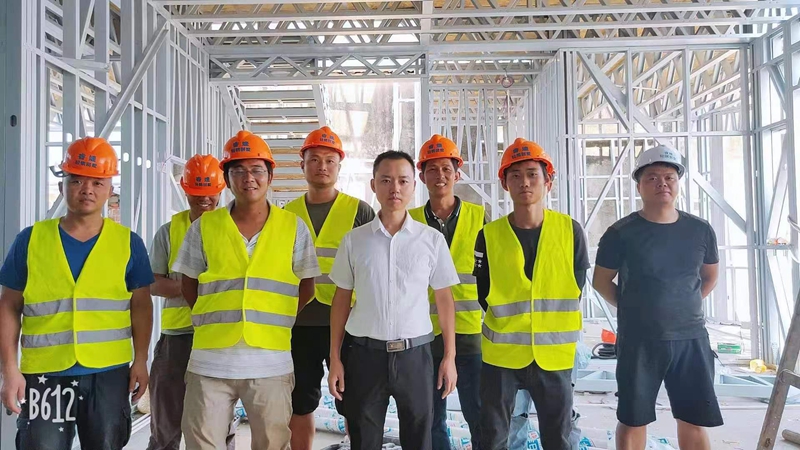In modern architecture, light steel villas and tin sheds are both prevalent building forms, yet they differ significantly in materials, performance, and application. Understanding these distinctions is crucial for making informed decisions based on living needs and scenarios. Among them, Ruijie Light-Steel Villas stand out with unique advantages in the light-steel construction industry.

Light Steel Villas
1. Materials and Structural Design
Light Steel Villas
- Core Material: Light steel keels synthesized from hot-dip galvanized steel strips via cold-rolling technology. These keels form the main structure, characterized by high density, strength, and stability.
- Wall Composition: Insulation materials and lightweight panels (e.g., OSB boards) are used for walls. OSB boards offer easy processing, moisture resistance, uniform texture, high bonding strength, and formaldehyde-free E1-grade eco-certification. Additional layers like glass fiber cotton and breathable moisture-proof paper enhance fire resistance, waterproofing, and sound insulation.
Tin Sheds
- Framework: Primarily use color-coated steel plates as the skeleton and sandwich panels (with cores of polystyrene, polyurethane, or rock wool) as enclosures.
- Flammability Risks: EPS-core sandwich panels pose fire hazards. During combustion, EPS melts, forms cavities, and accelerates structural collapse.
Ruijie’s Rigorous Standards:
Ruijie Light-Steel Villas enforce strict material selection criteria. All suppliers must have 15+ years of production experience and provide certified quality inspection reports to ensure structural integrity and safety.

Tin Sheds
2. Performance Characteristics
Thermal Insulation
- Tin Sheds: Metal materials rapidly conduct external heat, causing indoor temperatures to soar in summer.
- Light Steel Villas: Multilayered walls and roofs (structural, insulation, and finish layers) with materials like rock wool or polyurethane foam maintain stable indoor temperatures. Ruijie’s scientific designs ensure year-round comfort (warm in winter, cool in summer).
Seismic and Wind Resistance
- Light Steel Villas: Flexible, lightweight structures absorb seismic energy and withstand high-magnitude earthquakes/hurricanes.
- Tin Sheds: Simple structures offer minimal resistance to natural disasters.
Soundproofing
- Tin Sheds: Fail to meet China’s 40-decibel soundproofing standard, compromising livability.
- Ruijie Villas: Walls achieve 60-decibel sound insulation through steel keels and fireproof acoustic materials.
3. Lifespan and Sustainability
Light Steel Villas
- Lifespan: 50–100 years with routine maintenance.
- Eco-Friendly: Dry construction minimizes waste; 80%+ materials are recyclable post-demolition.
Tin Sheds
- Lifespan: 4–5 years in industrial sites without maintenance.
- Recyclability: Partial recycling possible but less efficient than light steel.

Ruijie Light Steel Villa Construction Team
4. Application Scenarios and Aesthetics
Light Steel Villas
- Usage: Low-rise residences, holiday villas, temporary housing.
- Design Flexibility: Customizable aesthetics to meet diverse preferences. Ruijie’s expert team ensures safety, reliability, and visual appeal.
Tin Sheds
- Usage: Temporary sites (construction camps, warehouses).
- Aesthetics: Monotonous designs with limited visual appeal.
5. Conclusion
Light steel villas and tin sheds differ fundamentally in materials, durability, environmental impact, and adaptability. For those prioritizing long-term comfort, aesthetics, and sustainability, Ruijie Light-Steel Villas are the optimal choice. Conversely, tin sheds serve as cost-effective temporary solutions for short-term, low-demand scenarios.